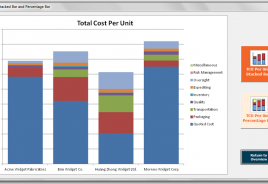Bridging the Cash Gap
by Brandi DiGiorgio
Top Three Ways Manufacturers Can Bridge the Cash Gap
Manufacturers are still feeling the effects of the recession nearly 10 years after it began. Despite advances in technology allowing companies to better track and predict inventory needs through supply chain and operations data, many manufacturers are dealing with the cash gap and drawing on a line of credit to make up capital shortfalls.
Customers who were forced to extend their payment terms to stay afloat a decade ago are still operating in recession terms. Now that the market is back up, it’s time to either renegotiate the terms or retrain customers to pay on time. Here’s three ways manufacturers can bridge the cash gap.
1. Collection is Key
A good place to shrink the gap is by looking at your receivables and identifying ways to speed up collections. Sending out past-due or reminder letters and emails, even phone calls may not be enough to get the process moving. Manufacturers need to take a proactive approach.
2. Do Your Research
Consider performing credit checks on prospective customers. If the results show too much risk, you may want to pass on the business. Flagging new customers in your database, or offering “early-bird” discounts, can help ensure invoices are paid promptly.
3. Audit Your Procedures
Manufacturers should assess invoicing procedures to cut down the number of days in receivables. Poor communication between departments can lead to delays and confusion which ultimately impacts the bottom line. By streamlining collections, you can bridge the cash gap.
MarksNelson can benchmark your company’s cash gap to the industry average to help identify and implement changes to improve your cash position. For more information, including an evaluation of your company’s process contact info@MarksNelsonCPA.com.
Brandi DiGiorgio, as the leader of the manufacturing and distribution niche team, specializes in providing assurance and business consulting services to companies in those industries. Brandi also provides assurance and consulting services to companies with ERISA audit requirements for their employee benefit plans.
Her ultimate goal is to not only provide clients with the assurance they need, but the level of service they deserve.



